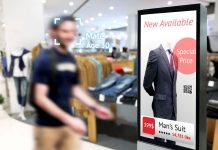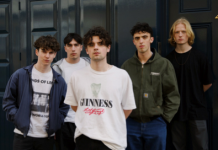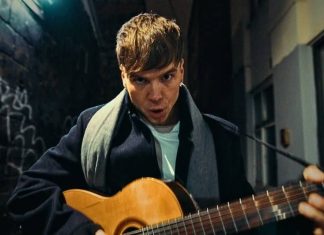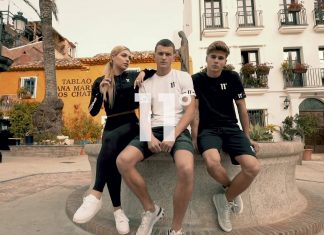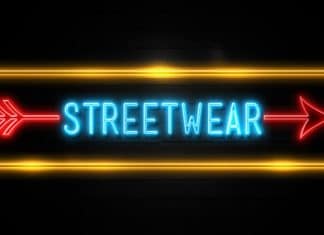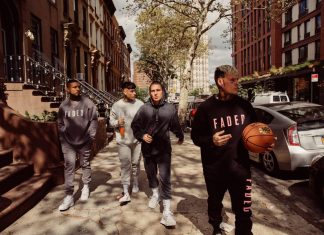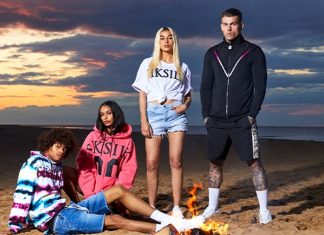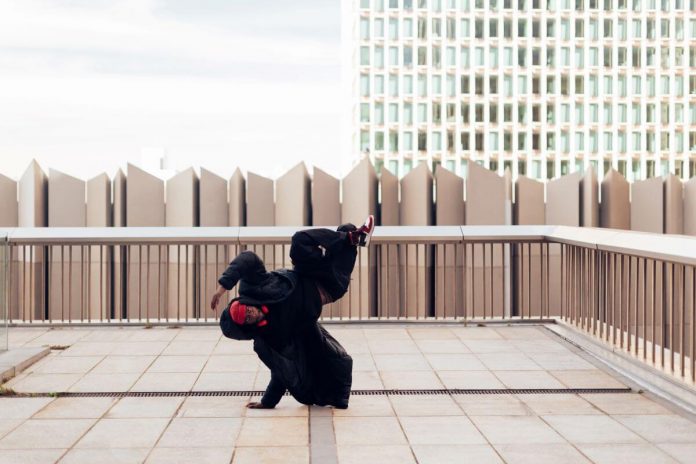
Last Updated on 17th July 2023
The advent of the internet has significantly reshaped consumer shopping behaviours, particularly within the realm of streetwear fashion. A noteworthy phenomenon in this space is the ‘hypebeast’ trend, which has seen an evolution from early 2000s sneakerhead culture to the contemporary designer-dripped #Influencer trend. This evolution reflects the influence of popular culture, particularly the fashion choices of globally recognized rappers, and the rise of social media platforms.
These platforms have birthed internet-famous brands, altering the landscape of ‘stunting’ culture and positioning ‘hypebeasts’ as a key target demographic. This article delves into the intricacies of hypebeast brands and collaborations, exploring the mechanics behind their creation, marketing strategies, and the cultural impact they engender. Additionally, the discussion extends to the future of hypebeast culture and its potential sustainability within the fashion industry.
This exploration aims to provide insights to consumers who seek to understand and partake in this evolving fashion trend.
Understanding the Hypebeast Phenomenon
The slang term Hypebeast refers to people who buy luxury items when trending, just to increase their status. The popular sneaker blog started by Kevin Ma in 2005, was inspired by this wording.
The Hypebeast phenomenon in contemporary culture, was characterized by the evolution of various trends from the OG Sneakerhead trend in the early 2000s to the Designer-Dripped #Influencer trend in 2012, has been significantly shaped by the changing shopping habits, the influence of rappers and social media, and the rise of internet-famous brands, ushering in a shift in the culture of stunting and a more attitude-driven approach to streetwear.
This dynamic shift has had a prominent cultural impact, fostering brand loyalty within the sneaker culture and fashion subcultures. Hypebeasts, influenced by fashion influencers, embrace street style and brand collaborations, valuing brand exclusivity and authenticity.
Online hype communities have become the epicentre of this phenomenon, positioning the Hypebeast at the heart of the cycle of trend propagation.
Next, we delve into the characteristics that make a brand ‘hypebeast’.
What Makes a Brand ‘Hypebeast’
In order to decipher what distinguishes a brand as appealing to the ‘hypebeast’ demographic, one must delve into the intricate dynamics of streetwear culture, the influence of prominent figures in music and fashion, and the pivotal role of social media in shaping consumer preferences.
Hypebeast culture represents a deep dive into brand loyalty, often fuelled by the obsession with exclusivity and authenticity in streetwear brands. The psychology behind hypebeast fashion is complex, driven by a desire for belonging and recognition within this subculture.
Notably, collaborations play a significant role in marketing strategies, often featuring fashion influencers and tapping into sneaker culture. However, controversies have arisen around hypebeast brands, challenging their authenticity and sparking debates about their impact on fashion trends.
These elements converge in understanding the role of celebrity endorsements in amplifying the allure of ‘hypebeast’ brands.
The Role of Celebrity Endorsements
Celebrity endorsements significantly contribute to the allure and popularity of ‘hypebeast’ brands, offering a powerful platform for these labels to reach wider audiences and solidify their place within streetwear culture. The impactful endorsements and celebrity collaborations provide the brands with a certain cachet, elevating their status in the fashion industry.
Influencer endorsements further bolster this effect, with celebrity brand partnerships often leading to exclusive collections that become instant must-haves. Celebrity fashion influencers, serving as brand ambassadors, don a pivotal role in shaping and driving fashion trends. Their endorsements, whether subtle or overt, resonate with their followers, leading to a surge in popularity for the endorsed brand. The influence of these celebrity style influencers extends beyond mere exposure, shaping the fashion landscape with their collaborations.
This, however, is only one aspect, as limited edition releases also play a significant role in these brands’ appeal.
Limited Edition Releases and their Impact
Limited edition releases serve as a pivotal tool within the hypebeast culture, their exclusivity driving demand and fostering a sense of urgency among consumers. These exclusive drops, often in the form of limited edition collectibles or brand collaborations, are integral to the sneaker culture. They tap into the sneakerhead culture’s obsession with rarity and exclusivity, fuelling the resale market and furthering hypebeast fashion trends.
Such releases are also linked to celebrity endorsements, adding another layer of desirability. The scarcity marketing strategy employed in these releases resonates deeply with an audience that thrives on exclusivity and the thrill of owning something rare.
As we delve into streetwear fashion trends, we’ll see how this strategy seamlessly marries with the aesthetics and ethos of streetwear.
The Influence of Streetwear
Streetwear, with its origins rooted deeply in the skater and hip-hop cultures of Los Angeles and New York respectively, has emerged as a dominant force in shaping the tastes and preferences of hypebeasts worldwide.
The evolution of streetwear has had a profound impact on mainstream fashion, transforming it into a form of self-expression. Despite criticisms of cultural appropriation, it has challenged gender norms and blurred the lines between luxury fashion and casual wear.
Streetwear’s influence on sneaker culture has been monumental, contributing to the rise of the ‘hypebeast’ identity.
More than clothing, its connection to hip hop and music culture, as well as its role in shaping youth fashion trends, underline its societal significance.
This pervasive influence naturally leads us to examine the power of scarcity in the world of hypebeast fashion.
The Power of Scarcity
The concept of scarcity plays a critical role in shaping the allure and desirability of products within the hypebeast fashion domain. Brands employ scarcity strategies, creating exclusive releases with limited availability to drive high demand.
This, in turn, cultivates a cult following and fuels a FOMO culture amongst consumers. The rarity factor further enhances the appeal of these items, turning them into collectible collaborations that command impressive resale values.
These supply and demand dynamics are fundamental in the hypebeast fashion sphere, as they establish an atmosphere of exclusivity that reinforces the desirability of the products. This methodology sets the stage for high-profile partnerships in fashion, weaving a captivating narrative of prestige and exclusivity around these collaborations.
High-profile Partnerships in Fashion
From the clever utilization of scarcity as a marketing strategy, the focus now shifts to the realm of high-profile partnerships in fashion.
Iconic collaborations between streetwear brands and luxury houses have become more common, blurring the line between high fashion and streetwear.
Sneaker collaborations have also gained significant traction, not just among sneakerheads but across various demographics.
The fusion of music, sports, and technology with fashion has birthed diverse collections, resonating with a broader audience seeking to identify with certain cultural aspects.
Artistic collaborations and influencer partnerships have further added dimensions to streetwear, turning the trend into a lifestyle.
These collaborations reflect the evolving ethos of the hypebeast culture, a trend significantly shaped by social media’s role in driving demand.
The Role of Social Media in Driving Demand
Influencing consumer behaviour, social media platforms have become instrumental in driving demand for streetwear and shaping the hypebeast culture. Platforms like Instagram are utilized for viral marketing strategies, with social media influencers showcasing brand collaborations and hashtag campaigns.
Instagram aesthetics, curated with precision, enhance the desirability of items, appealing particularly to Generation Z consumers. Online brand communities flourish, creating a sense of belonging, and user-generated content further amplifies brand visibility.
Social media advertising, through influencer collaborations, is becoming increasingly dominant in the sales funnel. Insights from social media analytics guide brand strategies, helping to predict trends and consumer behaviour.
This digital revolution in streetwear culture sets the stage for an analysis of exclusive fashion drops and their unique appeal.
Exclusive Fashion Drops and their Appeal
Exclusive fashion drops, limited-edition releases of clothing and accessories, have emerged as a central component of the streetwear industry, captivating the hypebeast culture with their rarity and perceived exclusivity. This exclusivity fascination, coupled with the limited availability of these pieces, feeds into the streetwear craze, fostering brand loyalty and heightening the fashion hype.
The collaborative creativity seen in celebrity collaborations, particularly online exclusives, adds to the allure, driving a cult following for these unique items. The collectible appeal of these releases is significant, with each drop often seen as a covetable commodity.
This approach to fashion marketing taps into the desire for uniqueness and individuality within the hypebeast community.
The subsequent section explores this concept further, delving into the complexities of branding in the fashion world.
The Art of Branding in Fashion
The allure of exclusive fashion drops, an intriguing facet of the hypebeast culture, lays the foundation for the next exploration: the art of branding in fashion.
Branding strategies play a pivotal role in the hypebeast universe, where brand identity and brand storytelling become key elements in creating a desirous image.
The power of brand collaborations is often leveraged, creating a unique brand differentiation, enhancing brand recognition, and fostering brand loyalty among followers.
These tactics in fashion marketing contribute to effective brand positioning, creating a distinct brand image that resonates with the target audience.
This intricate interplay of branding elements, instrumental in shaping the hypebeast culture, sets the stage for the next discussion: the influence and impact of contemporary marketing strategies, particularly influencer marketing.
The Impact of Influencer Marketing
Modern marketing strategies, notably influencer marketing, have significantly shaped the hypebeast culture, driving trends and steering consumer behaviour. Influencer partnerships have increasingly dominated the fashion scene, with influencer collaborations becoming a staple in brand endorsements.
While the authenticity debate continues, the effectiveness of influencer marketing strategies cannot be denied. Social media influencers have mastered the art of promoting hypebeast brands, enticing their followers with a sense of exclusivity and belonging. The impact of micro influencers is also noteworthy, proving that influencer marketing ROI is not solely dependent on follower count.
As we witness the evolution of influencer marketing trends, it’s crucial to delve deeper into the psyche of the hypebeast consumer, which will be our focus in the following section.
Understanding Consumer Behaviour
Analysing the buying habits and motivations of hypebeast consumers is crucial for brands aiming to capitalize on this influential segment of the fashion market. Through understanding consumer psychology, companies can create effective strategies, harnessing brand loyalty and influencer endorsements.
Hypebeast consumers show unique online shopping habits, often influenced by social media trends and peer behaviour. The power of brand perception and consumer preferences cannot be understated, with fashion trends heavily swayed by the popularity and reputation of particular brands.
Crucially, brand collaborations have become a significant determinant of buying behaviour, often creating a sense of exclusivity. Understanding these elements of consumer behaviour paves the way for discussions regarding the intriguing dynamics of the resale market.
The Resale Market and its Influence
Significantly, the emergence of a robust resale market has played a pivotal role in the evolution and sustainability of the hypebeast trend.
Resale market dynamics, fuelled by the economics of limited releases, are driven by influencers and resale culture. Sneaker reselling, in particular, has witnessed substantial growth, with the impact of hype on resale prices leading to profitability.
The role of online platforms in the resale market cannot be understated, enabling access to exclusive items and fostering a sense of belonging. However, the ethics of reselling hypebeast items and the influx of counterfeit goods pose challenges.
As we navigate resale market trends and predictions, consumer psychology in resale purchases continues to thrive. A deeper understanding is needed as we now turn to examine successful fashion collaborations.
Examining Successful Fashion Collaborations
The evolution of the trend has witnessed numerous successful fashion collaborations, proving to be a key strategy in amplifying hyperbole and driving consumer interest. Collaborative creativity and design innovation have been pivotal in these alliances, synergising brand identities to foster consumer engagement.
This has led to a remarkable cultural impact, transforming the fashion industry dynamics. The use of strategic marketing tactics to narrate collaborative storytelling has been instrumental in building brand loyalty and influencing consumer psychology. These partnerships not only reflect the industry’s pulse but also set new trends, making them a cornerstone in the hypebeast culture.
The importance of these collaborations is further highlighted in fashion shows and events, where they serve as platforms for brands to showcase their combined vision and creativity.
The Role of Fashion Shows and Events
Undeniably, fashion shows and events play a critical role in the hypebeast culture. They serve as influential platforms where designers and brands can unveil their latest collaborations and collections, thereby shaping trends and dictating the future direction of streetwear fashion.
Fashion show exclusivity, coupled with celebrity attendance, creates a significant buzz. Brand activations and fashion week collaborations draw attention and create demand. The presence of influencers further amplifies the impact of the event, with their runway trends and unique street style at events often becoming a benchmark for many.
Behind-the-scenes, backstage access, and press coverage provide an insider glimpse, adding to the overall allure. Through these elements, hypebeast brands leverage the power of fashion events, setting the stage for the subsequent rise of e-commerce in streetwear fashion.
The Growth of Online Shopping and E-commerce
As the digital age revolutionized consumer behaviour, online shopping and e-commerce platforms became instrumental in propelling the hypebeast trend forward. The evolution of e-commerce led to the rise of online marketplaces where exclusive items, often associated with hypebeast culture, could be bought and sold. Changing digital shopping habits, heavily influenced by influencers in the e-commerce space, had a profound impact on the online shopping experience, both enhancing it and introducing new cybersecurity concerns.
Innovations in online payment methods and the role of customer reviews added to the allure of these platforms. As social media’s impact on online shopping grew, it forecasted a rapidly evolving future for online retail. This technological shift in fashion consumption paved the way for the subsequent wave of pop culture influences on fashion trends.
The Influence of Pop Culture in Fashion Trends
Inextricably intertwined with the evolution of fashion trends, pop culture has become a potent force in shaping the sartorial preferences of the modern hypebeast. Cultural icons and fashion influencers from the music industry, film and television, sports, art, and design have all contributed to this phenomenon.
A notable cultural movement is the rise of Internet memes and their influence on streetwear aesthetics. Furthermore, pop culture references and celebrity fashion have become integral elements of hypebeast culture, often serving as inspiration for collaborations between brands.
As this cultural exchange continues to intensify, it’s crucial to consider the implications for sustainability in the fashion industry, a topic that has become increasingly pertinent in recent years.
Sustainability in the Fashion Industry
The fashion industry is facing an urgent need to prioritize sustainability, given its significant environmental footprint.
Ethical sourcing and the use of eco-friendly materials have become imperative, fostering a shift towards slow fashion. This movement encourages a circular economy, promoting sustainable manufacturing processes that minimize waste and environmental harm.
Despite these efforts, greenwashing in fashion remains a concern, further emphasizing the need for transparent supply chains.
Upcycling and repurposing initiatives offer innovative solutions, while fair trade practices ensure equitable remuneration for labor.
However, the transformation of the industry also hinges on consumer education about the importance of sustainability in fashion.
With these evolving perspectives, we are poised to explore the future of hypebeast culture, where sustainability may take center stage.
The Future of Hypebeast Culture
Moving from the discussion on sustainability, the future of the hypebeast culture seemingly pivots on a fulcrum of change, driven by a myriad of factors.
Emerging fashion trends driven by influencers, celebrity collaborations and the evolution of streetwear are converging with the impact of technology, yielding new expressions of style.
Sneaker culture continues to thrive, while gender-neutral fashion gains traction. Fashion and self-expression remain intertwined, now amplified by social activism. Sustainability, once a peripheral concern, is increasingly central to fashion discourse.
These dynamics are shaping the hypebeast landscape, making it more fluid and complex, yet also more inclusive and authentic.
Looking ahead, it becomes essential to learn from successful fashion brands that have navigated these changes adeptly.
Lessons from Successful Fashion Brands
Navigating the ever-shifting landscape of streetwear fashion necessitates a keen understanding of key components that have catapulted successful brands to the forefront of the hypebeast culture.
Brand storytelling and authenticity, along with a well-executed streetwear aesthetic, have proven essential in establishing brand loyalty.
Limited edition drops and product exclusivity further amplify the allure, bolstered by viral marketing strategies.
Influencer partnerships generate buzz, while collaborative creativity with other brands or artists keeps the offerings fresh and intriguing.
However, a note of caution must be sounded regarding cultural appropriation in fashion, as it can lead to criticism and loss of credibility.
Ultimately, successful fashion brands have mastered a delicate balance of these elements, continually reinventing themselves while staying true to their core identity.
Conclusion
In summary, the hypebeast trend presents a dynamic evolution of streetwear. It is driven by celebrity endorsements, limited edition releases, and the influence of pop culture. Its impact is deeply embedded in the fashion industry and is set to continue with the potential for a more sustainable future. The lessons gleaned from successful brands can be instrumental for emerging entities in the fashion sphere. This underscores the importance of understanding the hypebeast phenomenon.




